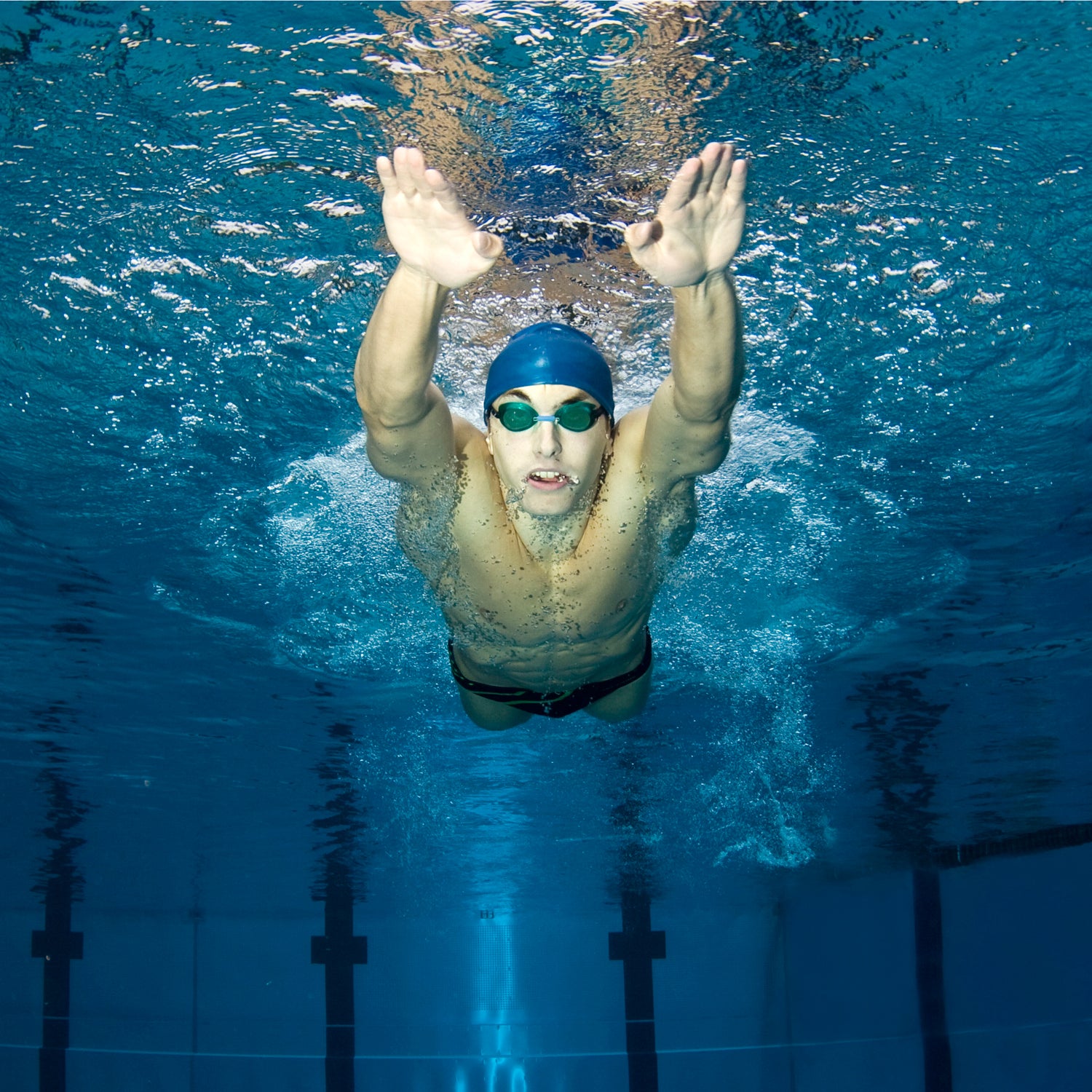For quite some time, I worked out with a sports performance coach who loved to change up our workouts. Flip tires, push weights, one-legged moves that would have me teetering like a hurricane-blown telephone pole. One time, he took me into the physical therapy pool and put together a workout to give my joints a rest. As part of the routine, he told me to grab a 25-pound weight plate, hold it against my chest, and try to swim to the other side. As soon as I pushed off to the wall, I sank to the bottom. When I came up, he grinned. That move, he said, was just a joke.
The workouts, though, had a real purpose. “The misconception is that pool therapy is for old people. Some of the best athletes in the world—in every sport—train in the water as well as the land,” says Kahl Goldfarb, the CEO of Water and Sports Physical Therapy, which has eight locations in San Diego and treats top professional athletes in many sports. “The benefit of the pool is that it offsets all the damage you’ve done on other days. You’re actually going to take care of the muscles, tendons, ligaments, and discs that get damaged from heavy training or exercise.”
Ideally, you’ll want to get into the pool a couple days a week. The workouts should be done in the same upright same position that you assume on land. This allows the buoyancy of the water to take pressure off your spine and joints, which allows them to rehydrate and lubricate, which leads to less inflammation and degeneration, Goldfarb says. Ideally, your aqua-based program should be sport-specific, but this basic program will allow you to see some benefits, especially if you do a lot of running.
Run in Place
This is harder than it looks because your tendency in the water will be to tilt your shoulders and pelvis forward and tilt your head back to keep yourself from sinking. Instead, you want to use your core to stabilize yourself as you move your legs and arms through the running motion. Concentrate on trying to stay vertical through your core. “The goal should be to start slow and then increase intensity,” Goldfarb says. Do it for 10 minutes. If you’re able to maintain correct position, you can try mixing in short bursts of higher intensity “runs.”
Frankenstein Walk
In the vertical position, raise your right leg up (keeping it straight, like full extension of a kick), while rotating your spine so that your left shoulder turns toward your right hip. Even while rotating, you want to engage your core so that you stay upright. Alternate opposite arm toward opposite leg that you kick. Aim for 10-15 reps on each side (you can challenge yourself by going backwards as well), and then return to running in place.
Jumping Jack
Keeping yourself vertical with your arms out to your sides (you should hold water dumbbells here), thrust your legs outward like a jumping jack. As your legs go apart, push down on the water with your arms so that they come straight down to your sides. As you “jack” back in with your legs, raise your arms out to the side. Again, the counter-force of the motions will help keep you afloat, but your core will also do much of the work, as will the gluteus medius muscle, which controls the pelvis and spine, and tends to fatigue in runners. Do 15-20 jacks, then return to running in place.
Hurdlers
From the vertical position, thrust your right leg up and straight out in front of you. At the same time, kick back with your left leg, bending at the knee. (If you were to stop this motion in time, it would look like you were clearing a hurdle.) Try to hold that position for three to five seconds, using your core to hold you, then return to neutral position. Don’t let your face fall toward the water. Do the movement on the opposite side. Your arms should follow the normal running motion (right arm forward when left leg is forward). Do 15-20 hurdles, then return to jogging in place.


